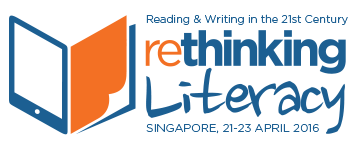Not so long ago, when talking to teachers about reading strategies and the use of texts in classroom, conversations commonly centered around print books and traditional strategies that promote fluency, vocabulary knowledge, and comprehension. However, in recent years, our views on reading have shifted drastically, along with notions about what constitutes “text.” Today’s students and teachers encounter texts in many different forms including digital, print, linear, multimodal, and interactive texts. Some texts, like traditional print novels, are read in a linear fashion, while others require a much different approach. For example, when reading a webpage, students typically skim and scan, navigate hyperlinks, and move through the text in a nonlinear way. Interactive picture book apps, and some e-books, are often enhanced with animations, audio, music, or embedded video files. This type of text challenges readers to make a wide range of strategic decisions about how to best approach, navigate, and comprehend the text.
As recent advancements in digital reading platforms allow for a more portable and interactive reading experience. No longer do we associate e-book reading experiences with desktop computer reading. Instead, we read on tablets, laptops, and smart phones. We can access e-books and story apps instantly through the Internet and even participate in online book discussions or other interactive reading experiences. In schools, students’ exposure to and interaction with digital reading are also increasing rapidly. A vast supply of e-books, coupled with falling prices of both e-books and tablet technologies, has prompted a rise in e-book reading among kids. According to the Kids and Family Reading Report (Scholastic, 2015), almost two-thirds of school-aged children in the United States reported having read an e-book. While most e-books are still read at home, e-book reading at school nearly doubled in the last two years. This is good news! However, to adequately prepare students for 21st-century reading, it is not enough to provide access to digital texts but rather help students discover and utilize the many affordances and features unique to each type of e-book and digital text. Here are some common e-book features and suggestions for how students can strategically use them to improve reading fluency, develop vocabulary, and support overall comprehension.
Customize the “Digital Page:” Many e-books and picture book apps allow readers to change settings and personalize text size, font, layout, background color, margin size, and so on. For struggling readers in particular, making the font bigger – and consequently displaying less text on each “page” – can make a big difference. Some students may prefer reading black font on a white background, while others benefit from white font on a dark page. Regardless what settings are applied, it is important that students learn how to strategically select settings that suit their individual needs.
Use Digital Dictionary: To support students’ vocabulary development, using a digital dictionary can be very helpful. In many e-books and story book apps, by simply clicking on a word, a written and/or spoken definition will appear. Students who have such easy access to vocabulary support tend to look up more words than those who have to rely on a print dictionary. In addition, some e-books offer translation features. For example, a student who reads a book in English may opt to have words translated to German. This tool is particularly helpful for students who are multi-lingual or studying a foreign language.
Listen to an Audio Narration: In a recent article, I discuss the benefits of using audio support in combination with digital texts. Students who listen to a narrated story may gain fluency skills and they can benefit from hearing unfamiliar words pronounced correctly. This, of course, is particularly helpful for struggling readers and those who are learning a new language. While some teachers may question whether “listening” is acceptable form of “reading,” there is ample evidence to suggest that strategic use of audio support can be very beneficial.
Just like teachers have taught traditional print-text reading strategies for centuries, we need to support our students in becoming strategic readers of digital texts. This, of course, includes helping students identify different types of texts and subsequent text structures, tools and features. I look forward to sharing more ideas for transforming literacy learning through the use of digital text at both the keynote session and workshop at the re-Thinking Literacy Conference. See you there!




